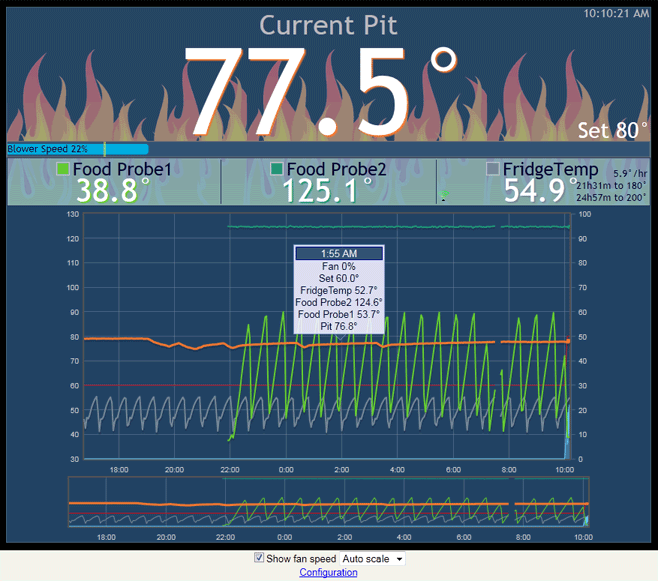Originally posted by Bryan Mayland:
Continuing from
the origianl LinkMeter thread to avoid confusion of "Research and Development" information.
LinkMeter is an OpenWrt firmware / package for interfacing to a HeaterMeter Arduino / ATmega328 based automatic BBQ controller. The fusion allows the HeaterMeter to control the grill temperature, while passing the heavy lifting of WiFi access and data storage off to the OpenWrt-compatible router. A more concise description can be found in
An Introduction to LinkMeter & HeaterMeter
LinkMeter Home Screen
Project Page -
GitHub Hosting
LinkMeter is an open source project and is hosted on my GitHub page. The ultimate source for information is the
Wiki which I will flesh out as we go.
Hardware
The official schematic is
in GitHup as well, the EAGLE top level directory. A parts list is available
in the Wiki.
Ed's Original LinkMeter

As you can tell the preferred platform is the Linksys WRT54GL router. A rough outline of the required steps to build a LinkMeter
1) Build a HeaterMeter-for-LinkMeter ATmega328 board.
IMPORTANT while you can use the HeaterMeter design from the standalone HeaterMeter schematic posted in the other thread, the official schematic from GitHub has additional components to support additional functionality, as well as being designed to fit inside the WRT54GL case. The official new schematic can also be used in a standalone fashion.
2) Flash the HeaterMeter with the arduino/heatermeter firmware. This can be done with a
USBtinyISP, another
Arduino, or any other ICSP programmer you might have.
3) Flash your WRT54GL with a prebuilt LinkMeter firmware image.
Snapshot recommended image. The packages are pre-installed and are only supplied for users wishing to install them on their own firmware.
4) Connect the HeaterMeter to your router via the internal serial port.
5) Plug your computer directly into one of the LAN ports. You will be assigned a network address (DHCP) in the 192.168.200.x range. Configure your wireless settings using the web interface at
http://192.168.200.1/. Generally, you want your wireless to be configured in Client mode (aka station mode) on your existing wireless network and to use DHCP.
6) Configure your probes depending on your build and probe types. (More information here soon)
7) BBQ


